These photos are from the Boon Songkran (บุญสงกรานต์) celebration at Wat Phothiwararam in Udon Thani city in April 2019. Thanks to everyone for making us feel welcome and especially to Khun Mon for answering my many questions. For more information, there’s an explanation of Boon Songkran and an overview of heet sip-song, the twelve Isan merit-making traditions.
While Songkran, the Thai New Year, is famous for its water wars that last at least three days – this year the government officially set the holiday for five days, April 12-16 – the core of Songkran remains a religious celebration of remembrance and renewal that takes place among family and community at homes and temples; and this, not playing water (as Thais call it), is the focus of this article.
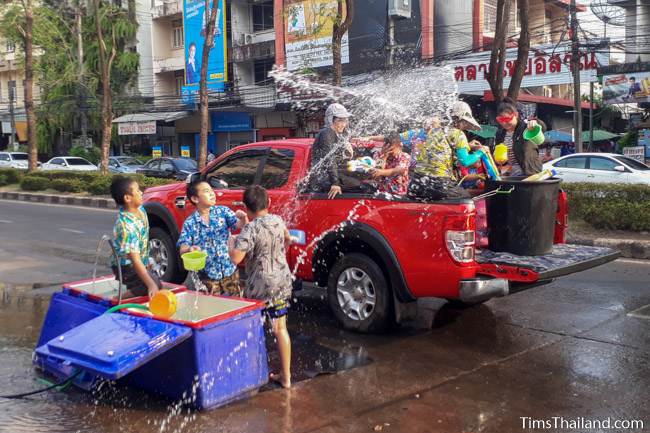
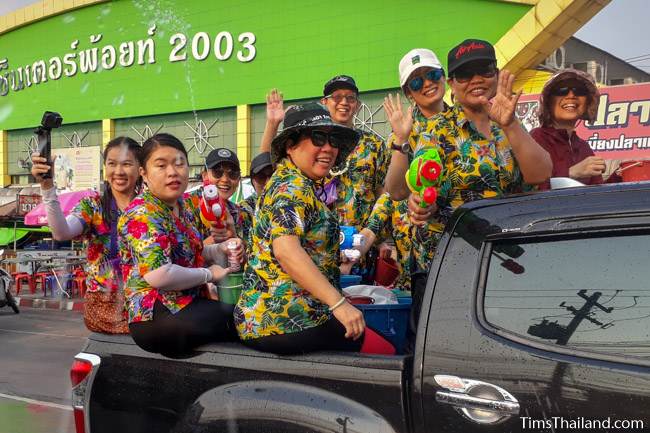
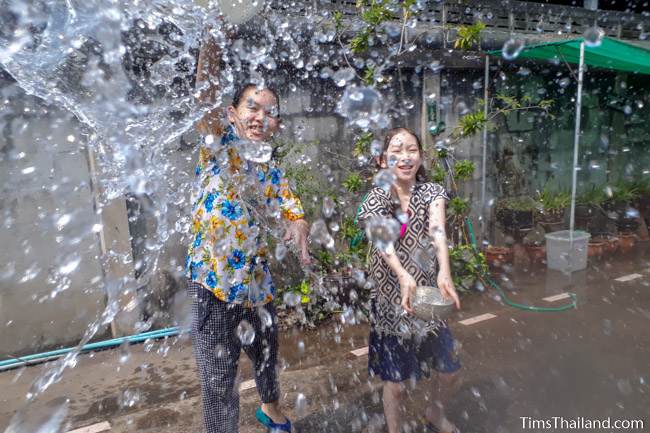
Ancestors and Elders
The most important part of Songkran is paying respect to parents and grandparents. Flower-scented water is gently poured over their hands and short blessings for the new year (wishes for health, happiness, wealth, etc.) are exchanged.
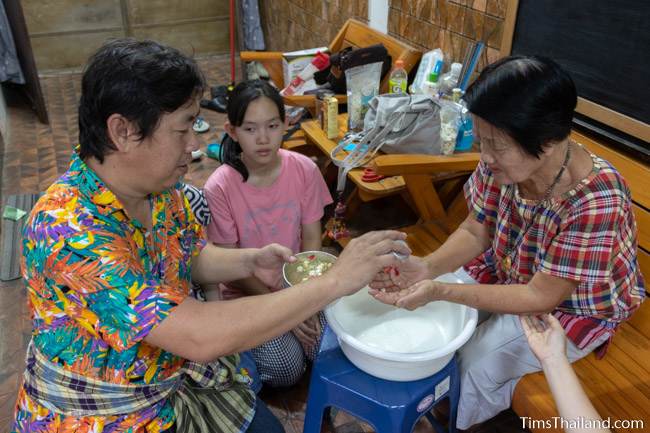
Buddha statues also get bathed with scented water; not only at homes and temples, but hotels, shopping malls, hospitals, schools, and the like also put them out on tables giving people extra opportunities to make merit. At home, most people will also sprinkle a little water on any other possessions the family deems holy such as amulets, relics, or monk statues.
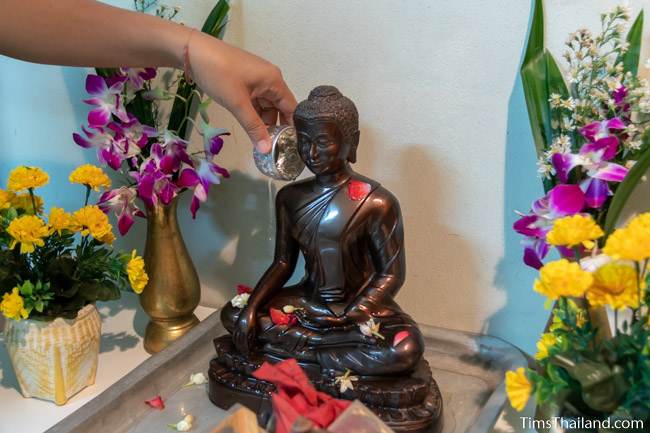
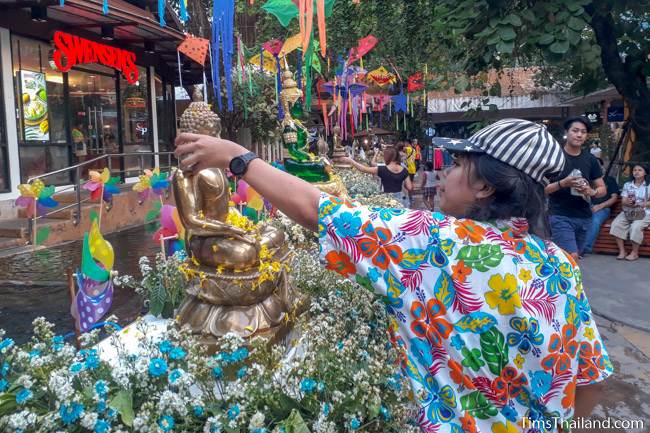
People also pay respect to their ancestors at home and/or at the temple. Food is given and the vault containing their ashes, if there is one, will be spruced up and decorated with flowers.
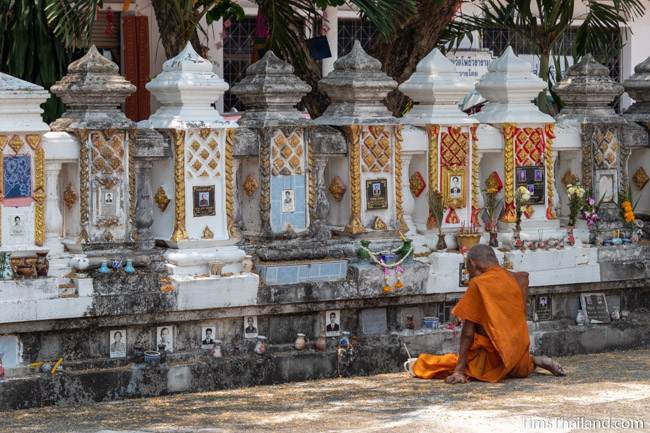
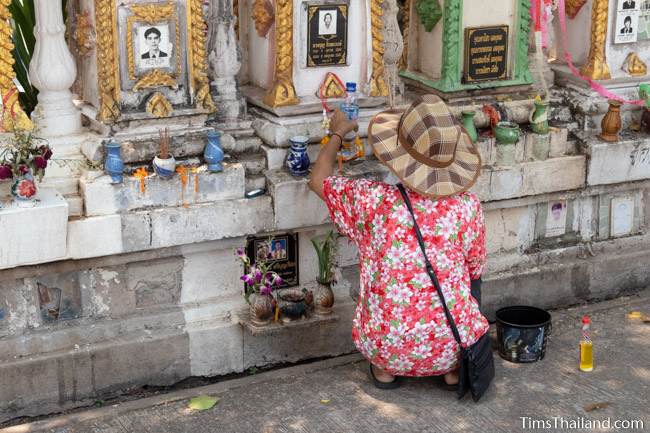
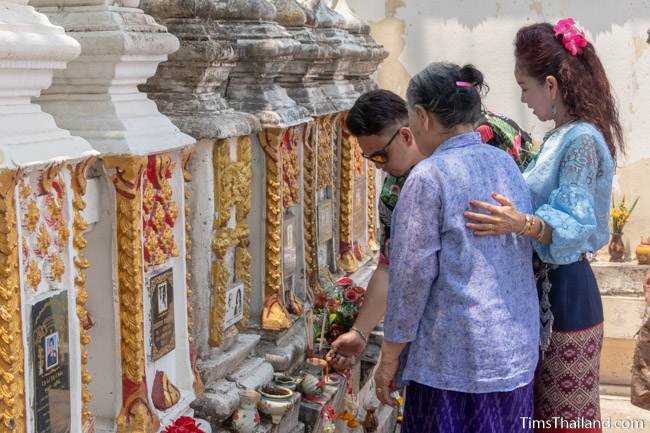
Some families give their spirit houses a spring cleaning and the gods who stay there get a gift of food and flowers. People pray to these gods for protection in the year to come.
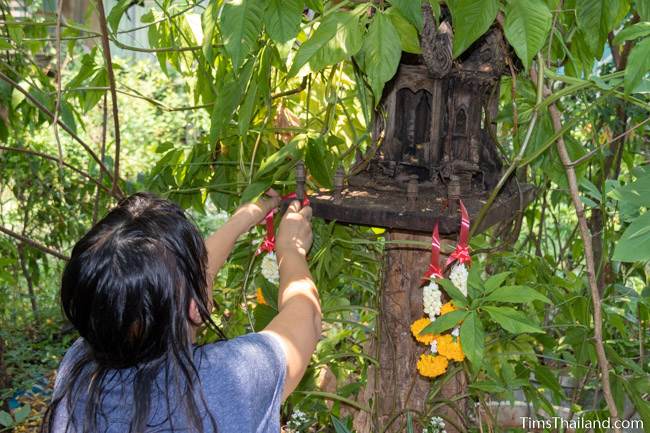
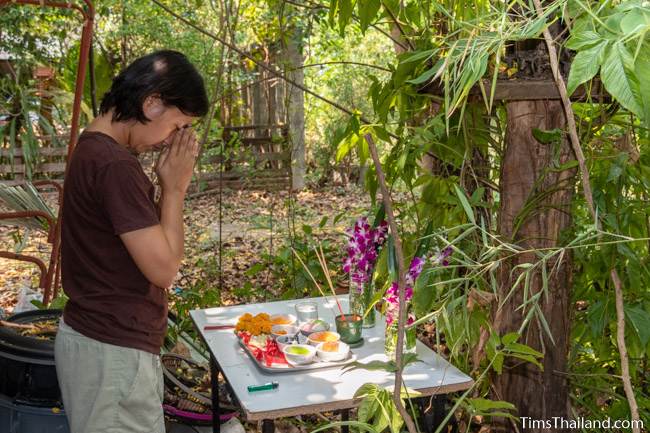
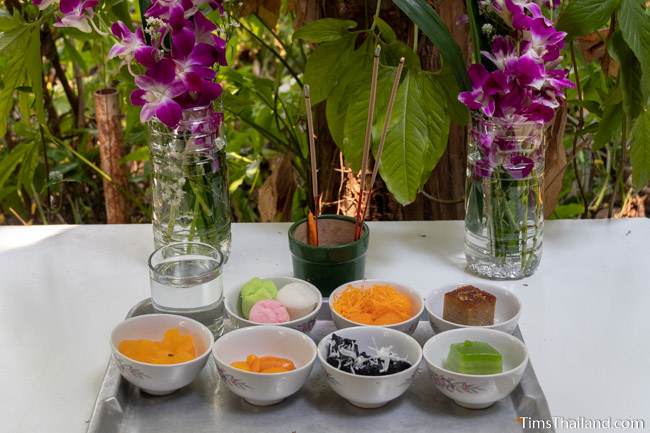
The Boon Songkran Celebration
While the government long ago designated April 13 as the official Songkran day, not every temple follows this. Wat Phothiwararam always celebrates on the 16th so that more of the temple community can come.
From the 13th to the 15th, the temple hosted the same merit-making activities that all temples do at this time: having monks sit out to receive donations, and letting people bathe Buddhas with water. Many people partook, and it was a busy three days at the temple.
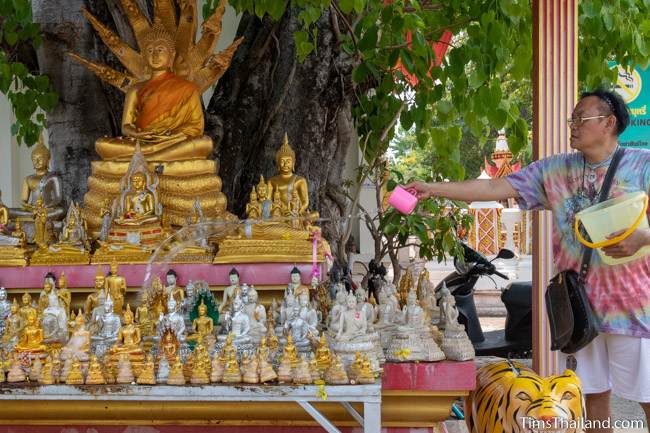
At Wat Phothiwararam there were no special activities for the monks in the morning – they just did their alms rounds through the streets and went about their day as always.
The main Songkran activity at most temples in Thailand is building chedi sai (“sand stupas”). The sand was packed with paddles, feet, hands, and hoes and shaped by templates, trowels, and hands. And at all times the sand needs to be kept wet, so someone was always on spray duty throughout the construction.
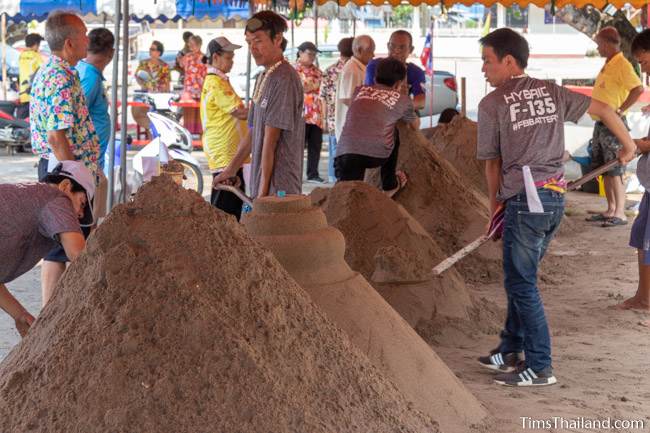
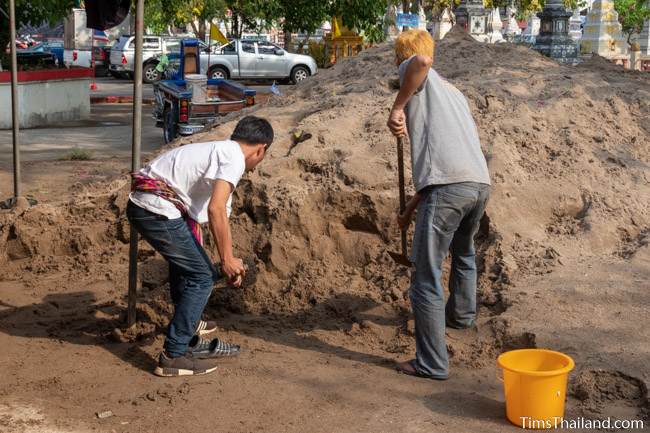
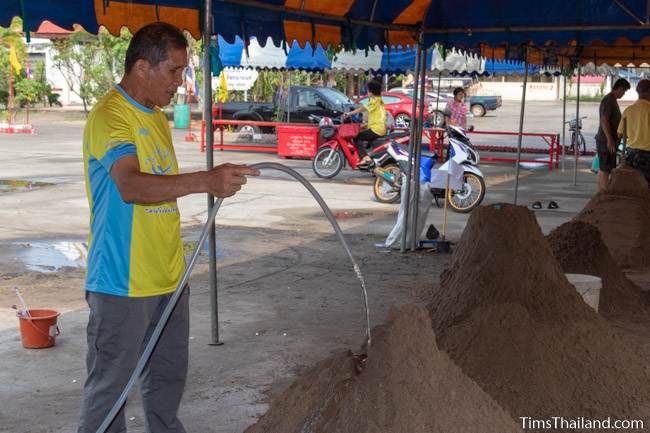
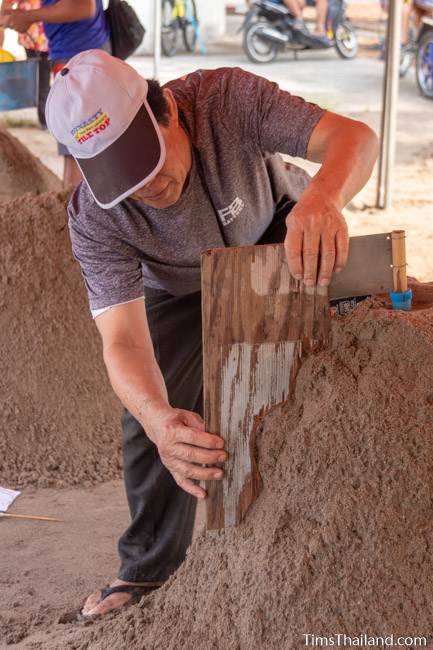
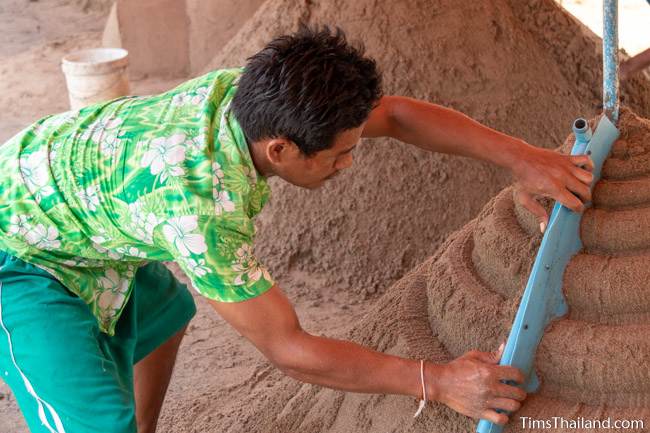
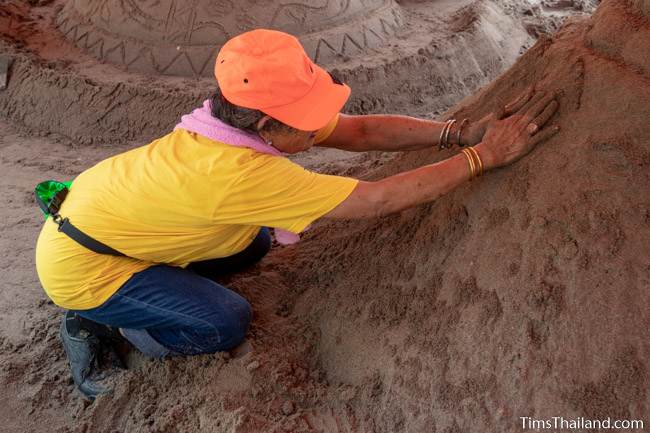
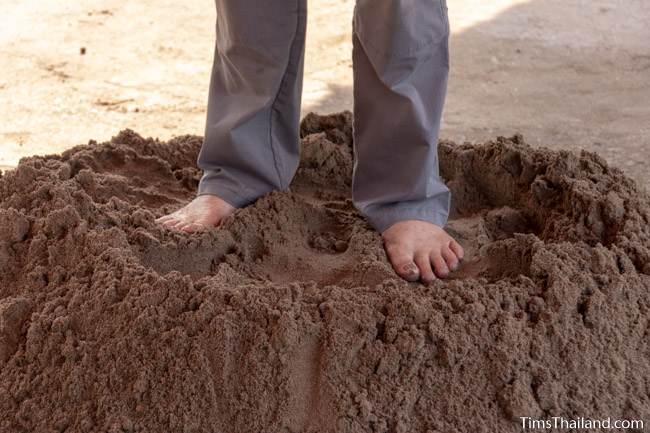
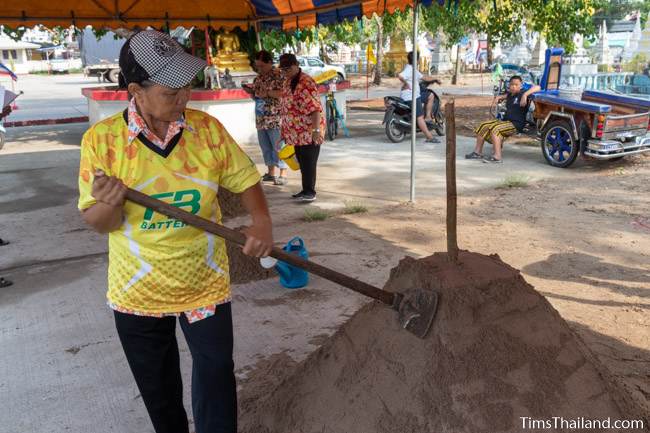
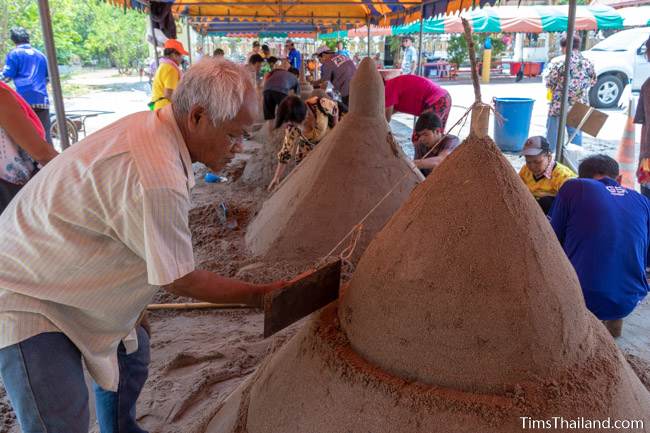
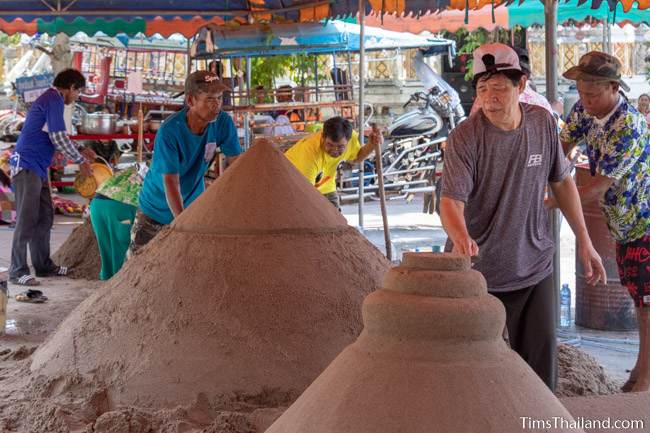
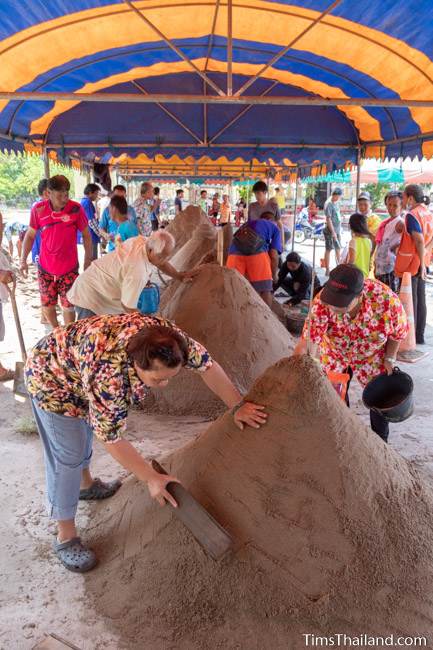
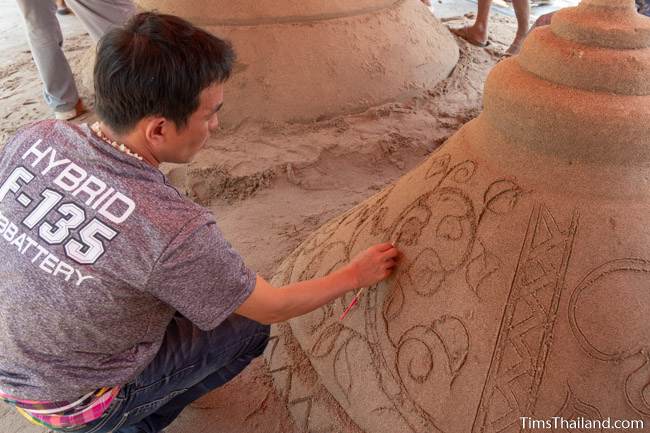
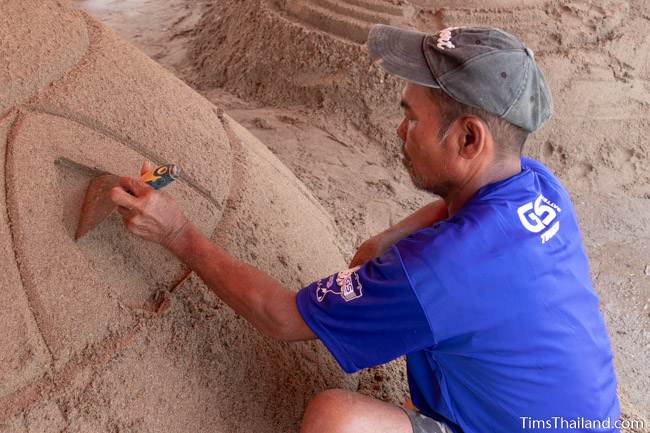
Besides sculpting sand, the other half of making chedi sai is preparing the flowers. Each blossom is inserted into the sand with a toothpick.
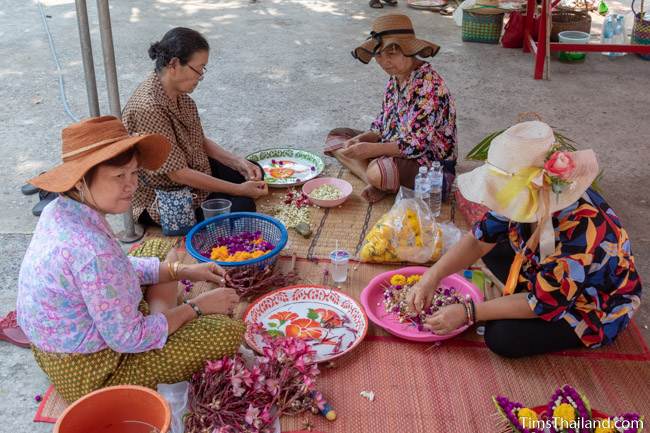
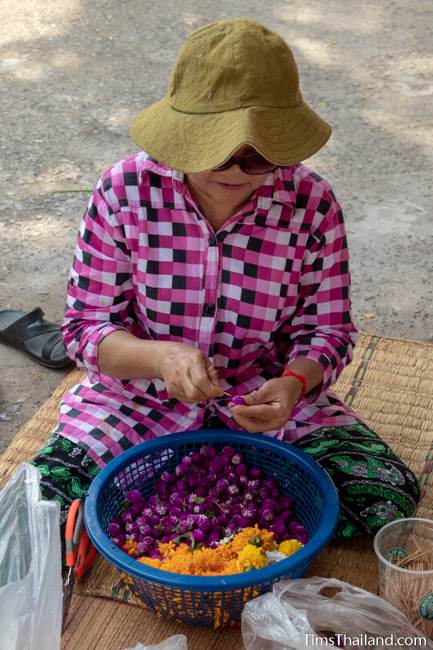
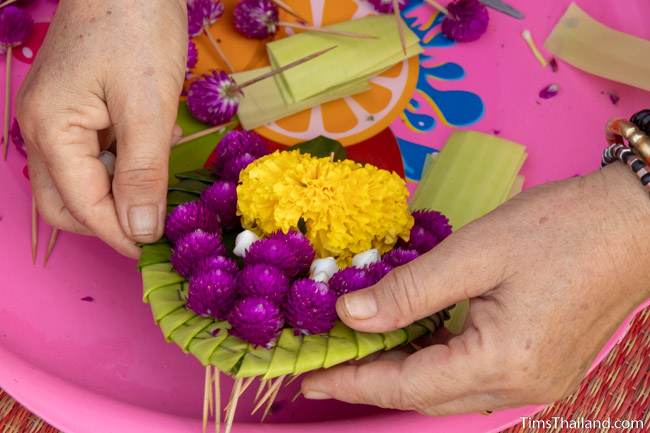
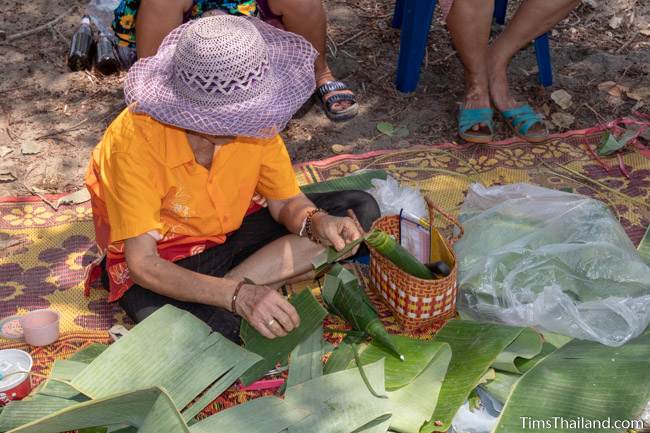
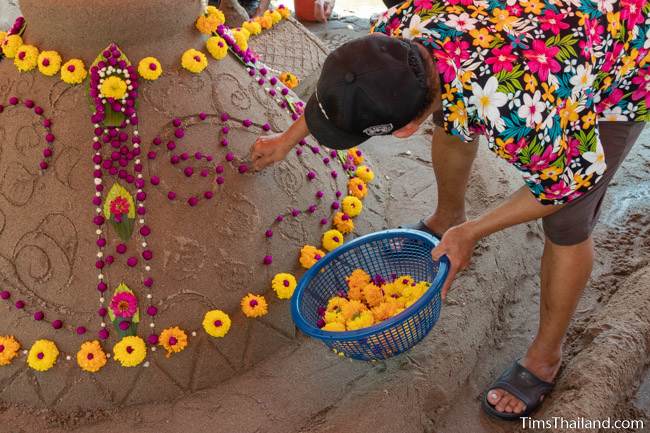
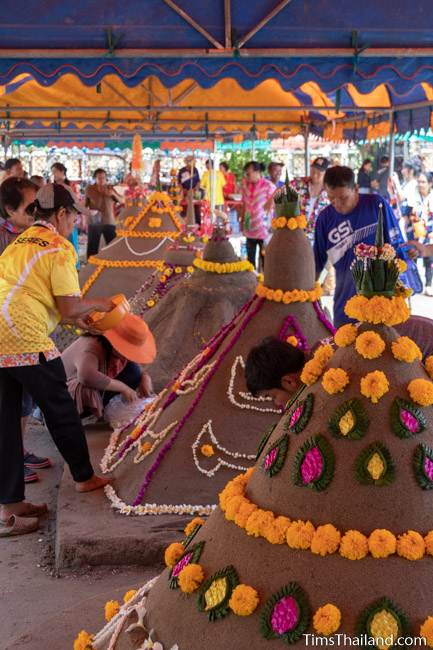
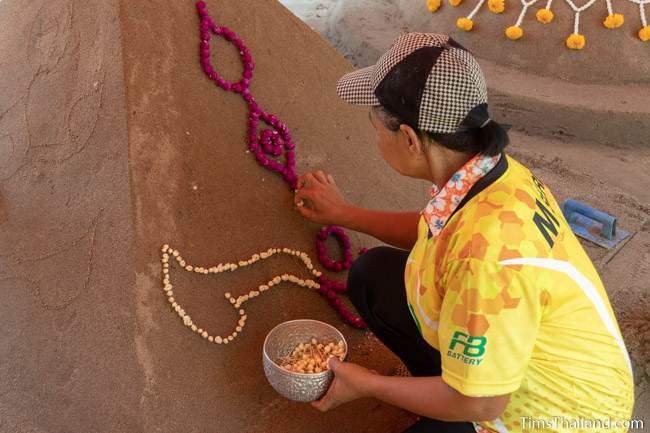
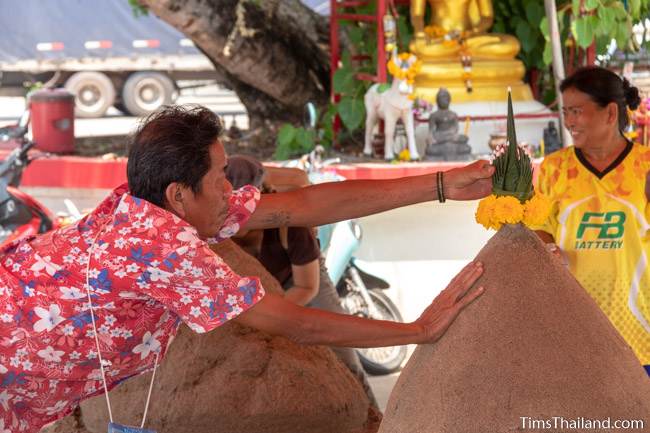
And people who weren’t sculpting stupas or fixing flowers were preparing and serving food to everyone who came to the temple to help out or to just have a look.
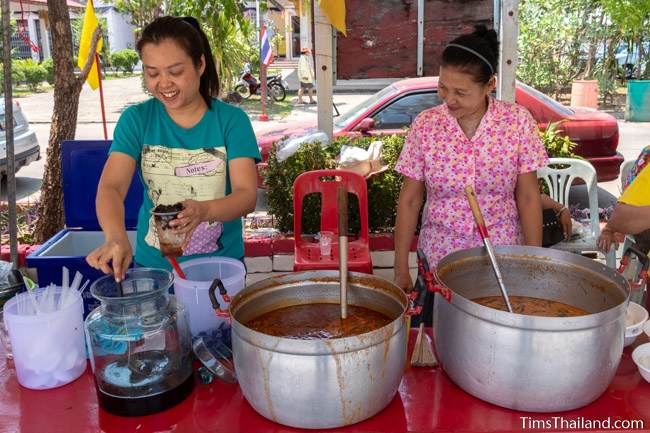
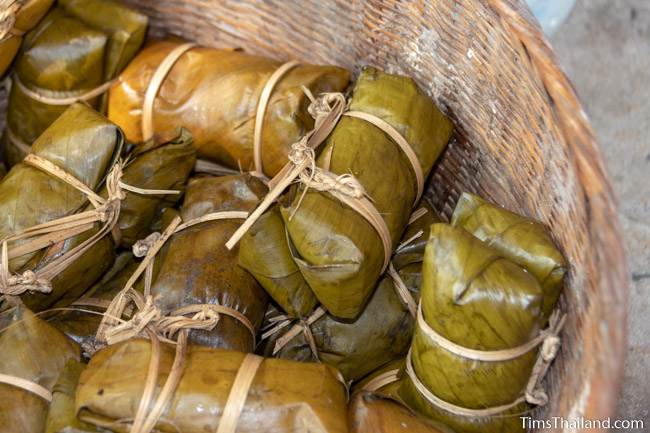
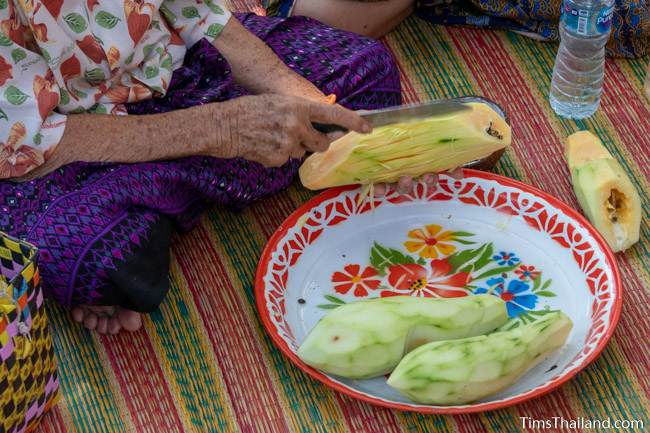
Music was blasted through large speakers. And this being Isan, many people broke out into spontaneous dancing during the day.
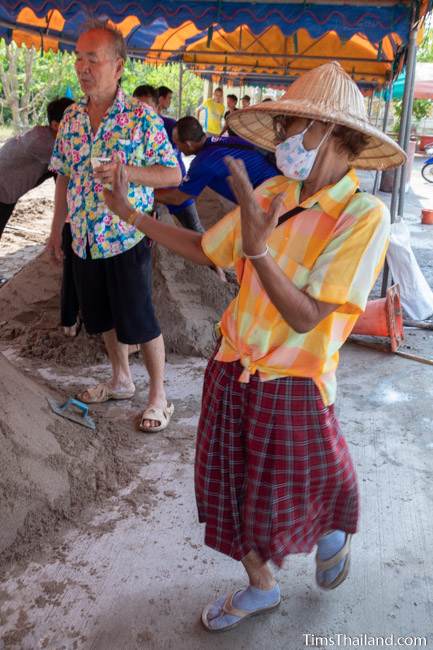
Building ceased at 2pm and then it was time for the judges (teachers from a nearby school) to have a look. The chedi sai building was a contest between nine neighborhoods around the temple, although even with cash prizes (2000B for 1st place, 1700B for 2nd, and 1500B for 3rd) few people seemed to take the competition seriously – many people helped out with other teams’ stupas. While style and beauty were major factors, other criteria included size (no shorter than 1.2 meters and no narrower than 1.5 meters), creativity, good teamwork, and respecting the Buddha.
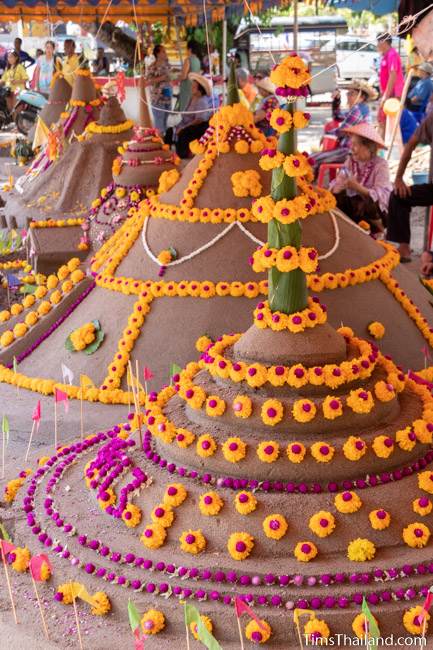
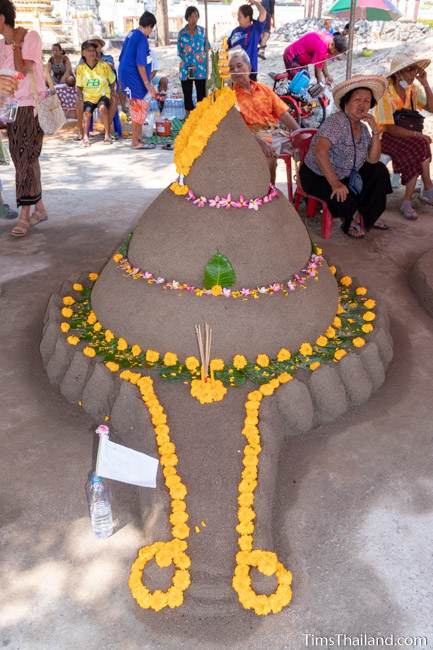
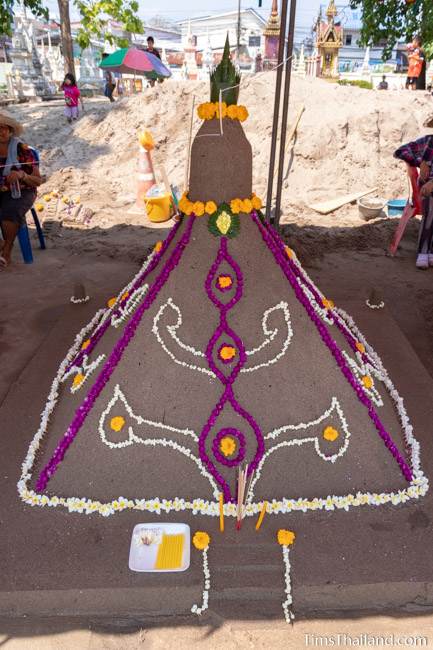
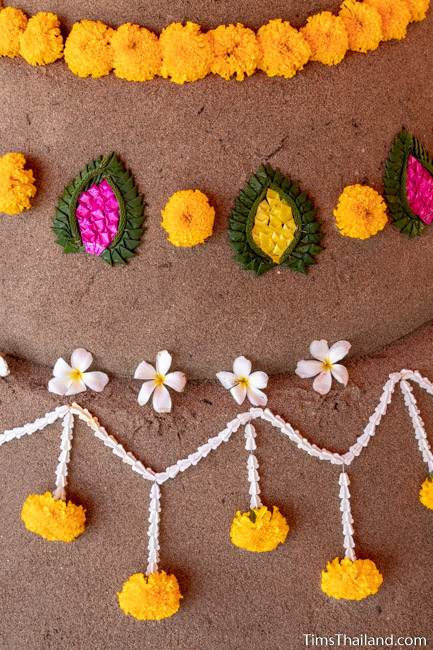
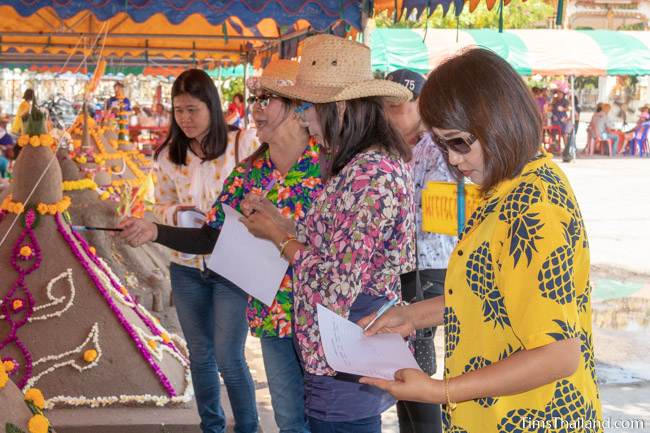
Wat Phothiwararam’s second act was gila puen mueang (“local sports”). It’s not a typical Songkran activity, but about a decade ago, people decided to do something fun that would attract more people to the temple, and this competition became an annual tradition here with some new sports introduced every year. Winning wasn’t the point and anyone who wanted to join could, regardless of age and ability.
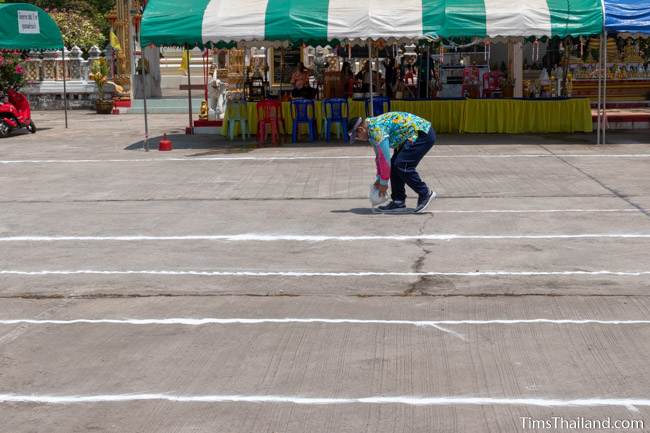
Carry a Child and Follow Your Wife
This was a simple water balloon-hugging relay race.
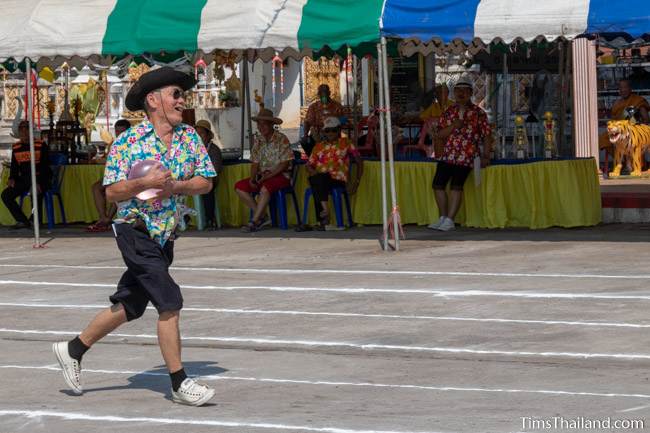
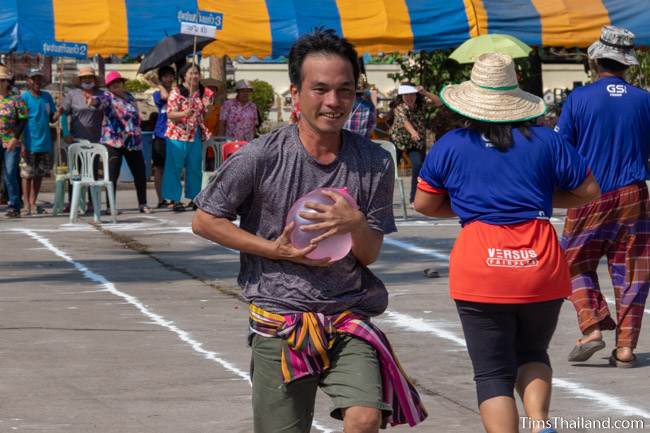
Golf Drive
Another relay race, this one needing to hit a golf ball to the opposite side of the track using a water bottle tied around the waist. The original plan was to use carrots instead of water bottles, but they were old and thus broke easily.
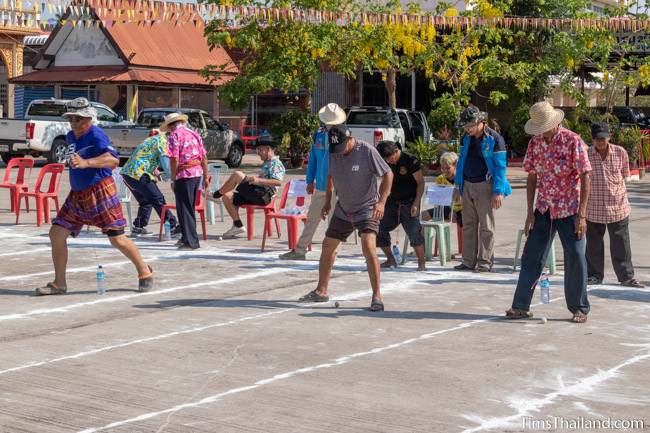
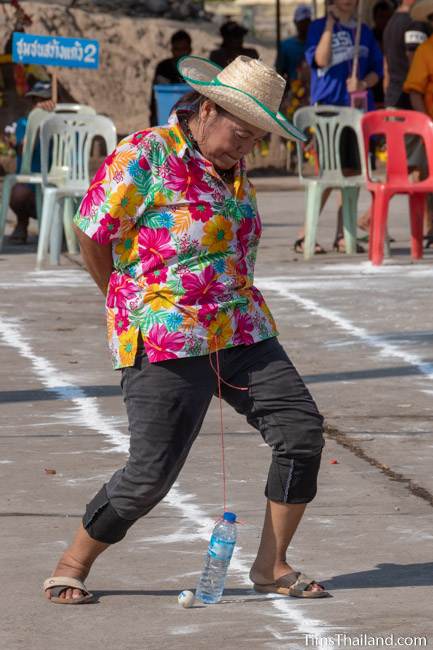
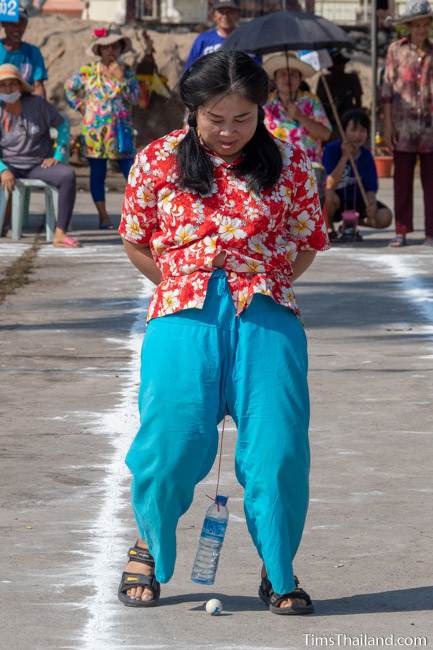
Banana Hammock
A water balloon toss using cloth. The team with the most catches in two minutes wins.
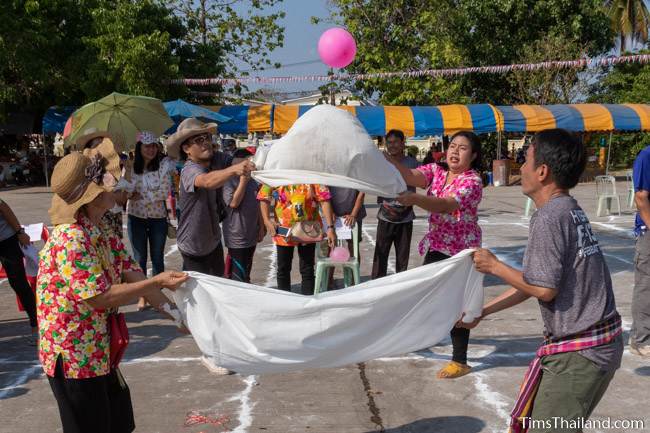
Close Your Eyes, Paint a Face, and Eat with Difficulty
The highlight of the afternoon, this was a race with five tasks along the course. One pair of people (all the other games were between teams of four; two women and two men) had to do each other’s makeup (The racers didn’t need to close their eyes for this, the results just made it look like they had.) then eat a banana, eat a slice of watermelon, eat a hanging piece of bread (no hands), and find a coin under a pile of talcum powder.
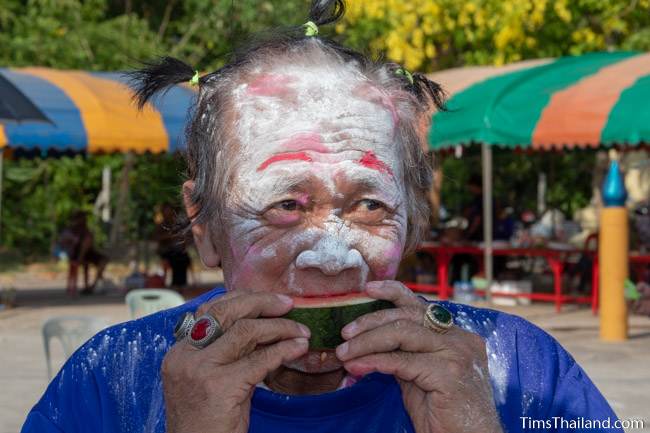
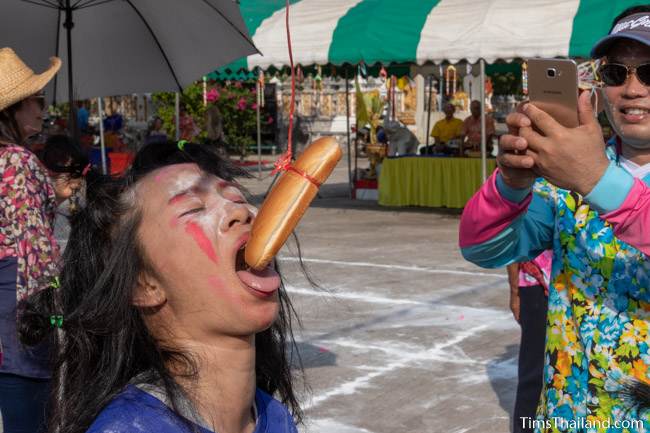
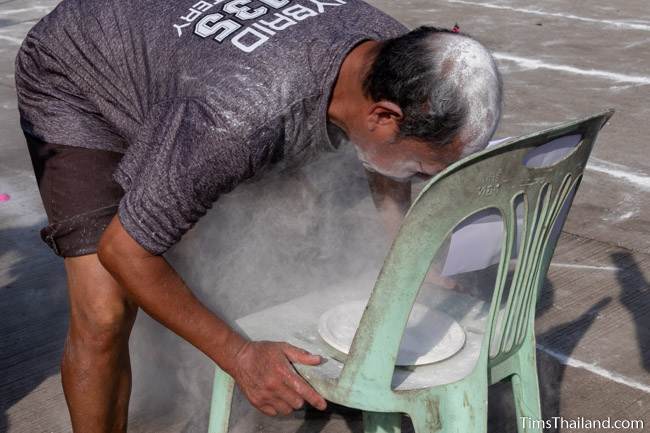
Superman Run
Another relay race, this one requiring each runner to put on a cape-and-underwear costume before running.
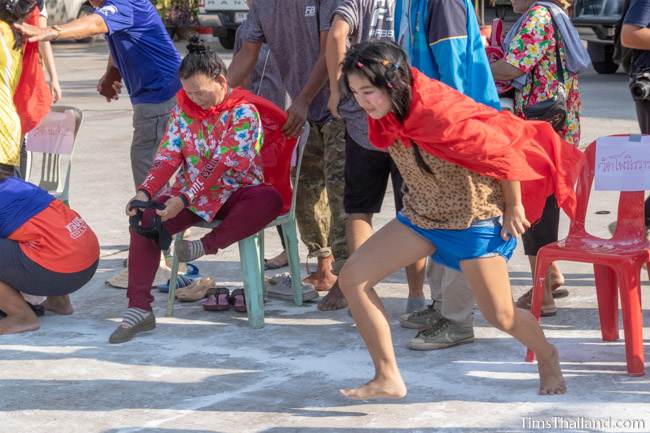
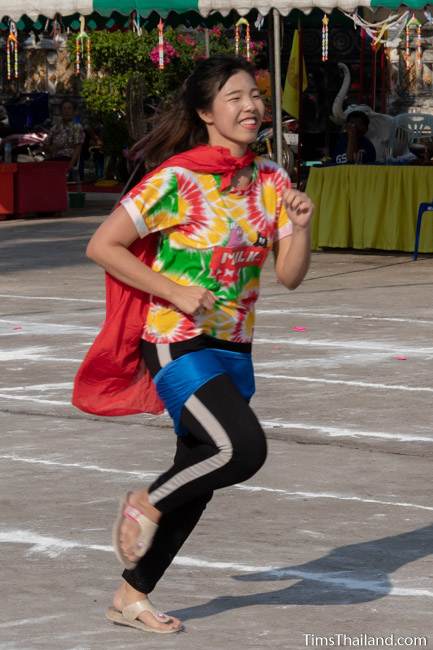
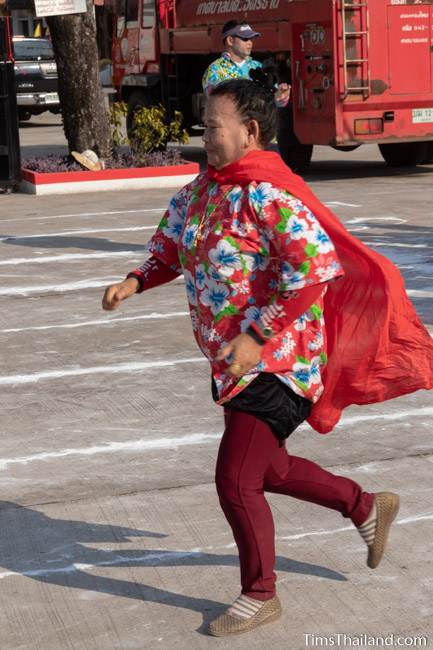
When the games were done, the winning neighborhoods for both competitions were announced: Chumchon Sang Kaew 1 won the best chedi sai, Chumchon Sang Kaew 3 was the sports champion, and Chumchon Wat Phothiwararam got a one-thousand-baht prize for having the most people attend. The awards, and also certificates of appreciation for the judges, were given by the mayor and other local dignitaries.
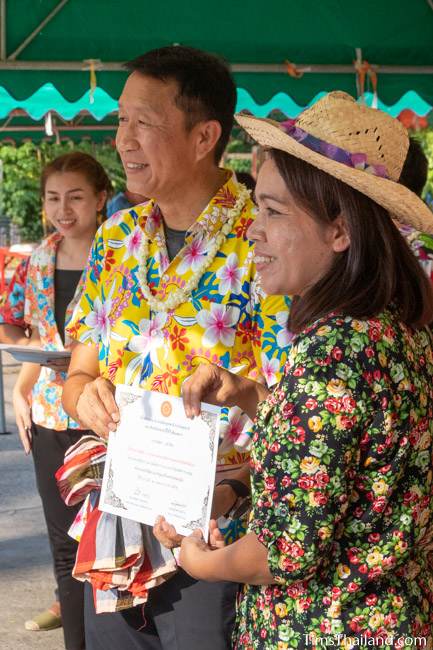
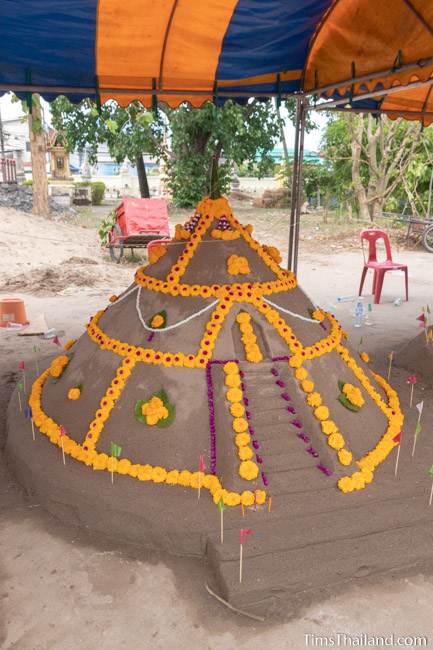
The games over, it was time for a bit of Buddhism. There were the usual blessings and suat mon chanting and prayers from the monks, and the sand used to make the chedi sai was formally given to the temple; this is a regular part of Songkran, though here it was symbolic since the sand was already at the temple. The people also made a considerable cash donation to the temple fund.
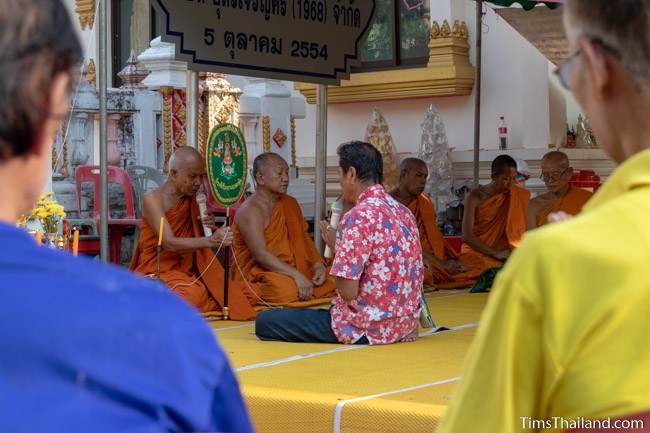
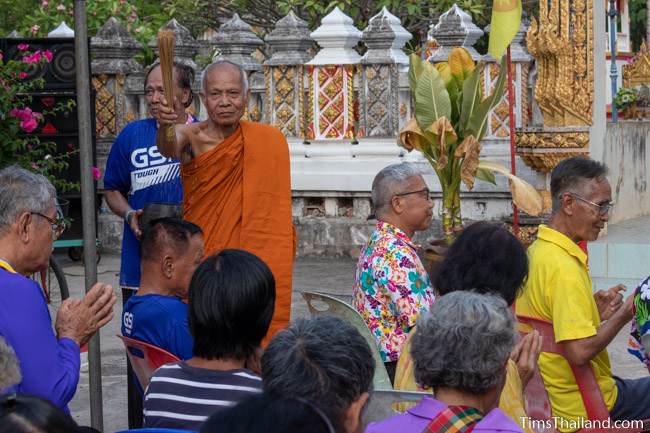
The Songkran celebration finished, as it does at most temples, with the monks sitting in a row so people could pour water over their hands and shoulders. And often the monks splashed back – both giving and getting a monk dousing brings great merit.
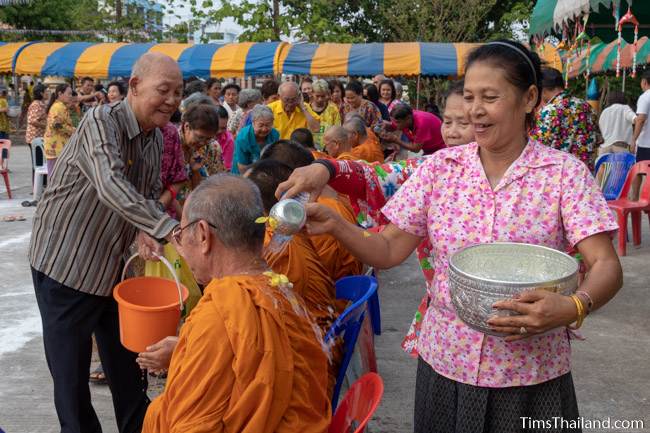
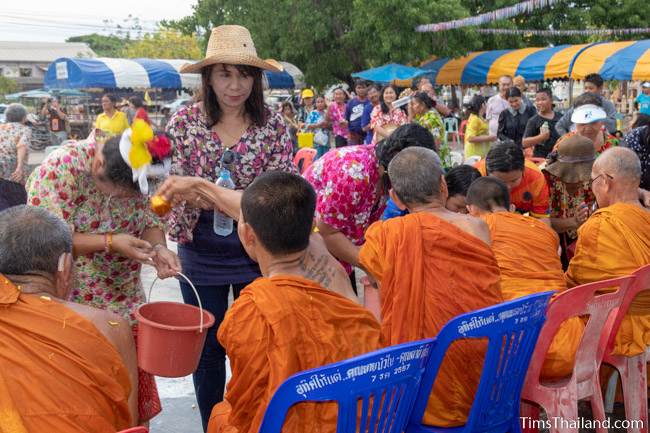
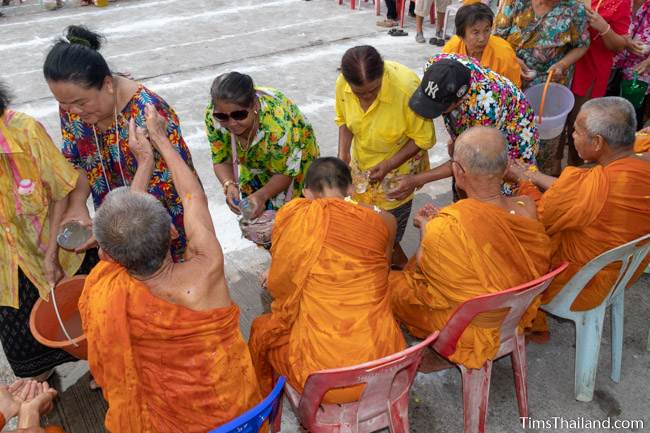
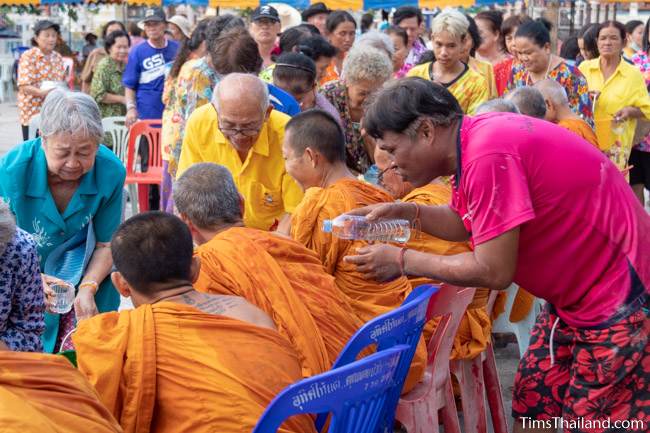
After the monks, many people stayed around the temple to pour water over their friends and neighbors, and in case that wasn’t enough, a fire truck was there to get everyone completely soaked – very refreshing after a day that topped 38C (100F). This led to a lot of dancing in the rain.
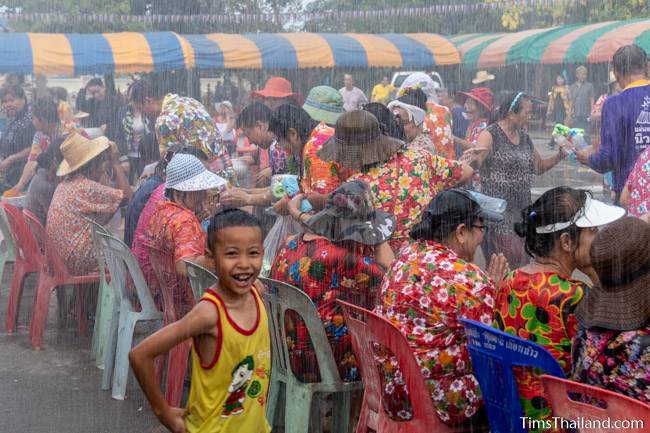
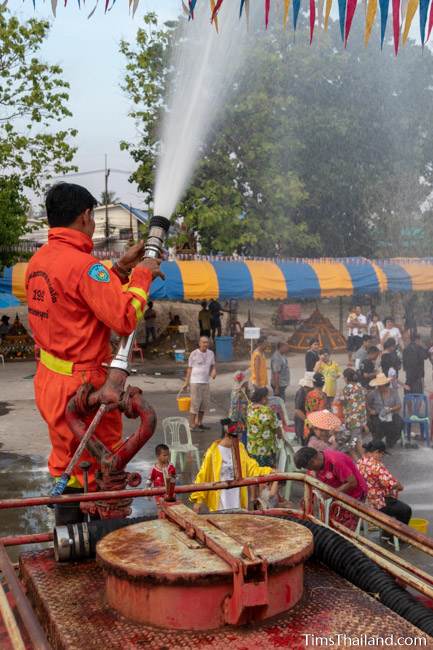
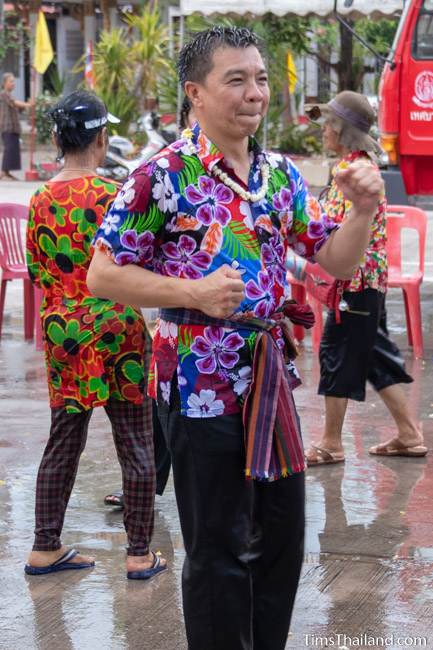
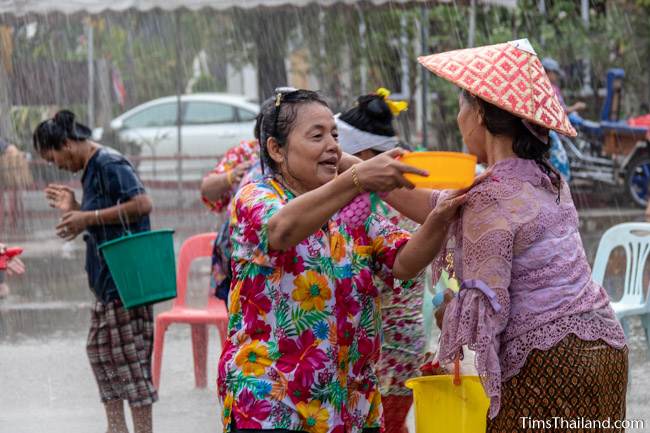
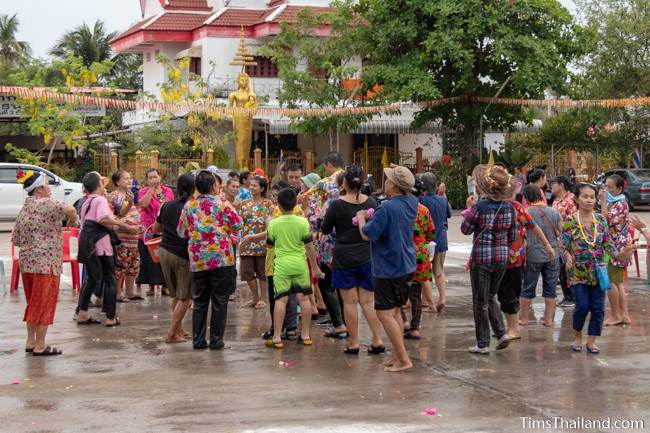
Boon Khao Kam (Month 1)
About Photo Essay
Boon Khun Lan (Month 2)
About Photo Essay
Boon Khao Jee (Month 3)
About Photo Essay
Boon Pha Wet (Month 4)
About Photo Essay
Boon Songkran (Month 5)
About Photo Essay
Boon Bang Fai (Month 6)
About Photo Essay
Boon Samha (Month 7)
About Photo Essay
Boon Khao Phansa (Month 8)
About Photo Essay
Boon Khao Pradap Din (Month 9)
About Photo Essay
Boon Khao Sak (Month 10)
About Photo Essay
Boon Ok Phansa (Month 11)
About Photo Essay
Boon Kathin (Month 12)
About Photo Essay